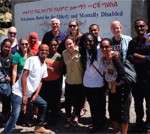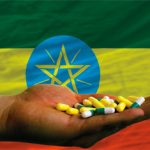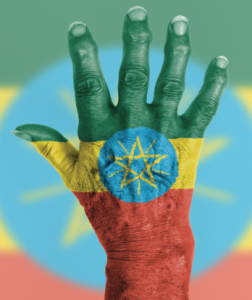
Ethiopia has no rheumatologists to treat its population with rheumatic illnesses.
MyImages – Micha/shutterstock.com
At present, the U.S. has approximately 5,000 full-time adult rheumatologists. By the year 2025, that number will decline to roughly 3,600.1 Sounds dire, right? Hold that thought.
Question: What country has 99 million people and no adult rheumatologists?
Answer: Ethiopia.2
The Nigerian Story
And then there is Africa’s most populous country, Nigeria, with roughly 170 million people. It has 30 rheumatologists.3
The Rheumatologist talked to one of them—the first one ever in Nigeria, in fact: Femi O. Adelowo, FRCP, MACR, is professor of medicine and a consultant rheumatologist at the Lagos State University Teaching Hospital and the Lagos University Teaching Hospital, both in Lagos, Nigeria.
Dr. Adelowo, current president of the African League of Associations for Rheumatology, states, “I qualified as a rheumatologist in 1982. At that point, I felt it was my duty to train others, so I wrote the curriculum for two of Nigeria’s medical colleges. Now, I have many residents interested in rheumatology who come from all over Nigeria to train with me for a year and a half; then they return to their homes and launch rheumatology clinics.”
Detailing the progression of training in Nigeria, Dr. Adelowo says, “The program is a minimum of six years and leads to the award of a Fellowship of the National Postgraduate Medical College of Nigeria in rheumatology or a Fellowship of the West African College of Physicians in rheumatology. Both programs have three parts: 1) A preresidency examination consisting of human physiology, anatomy, pharmacology, clinical chemistry, microbiology and statistics, among others.2) A three-year rotation through the major subspecialties of internal medicine, such as endocrinology, dermatology, cardiology, pulmonology and others. This culminates in an examination.3) Three years in a subspecialty culminating in the award of a fellowship from the appropriate college. The exams consist of an original dissertation, a multiple choice paper, an oral exam on the specialty and an oral exam on general medicine. Success in all aspects of this exam qualifies the candidate as eligible to be appointed a consultant.”
Although progress in training has occurred, says Dr. Adelowo, arthritis remains a poorly understood disease. “Many trainees interested in rheumatology have come for courses and have had their eyes opened as to the full spectrum of rheumatic diseases. Many people believe that arthritis is just one disease. Even among health personnel, there is a lack of awareness that there are different types of arthritis and different causes and modalities of treatment. Often, both medical professionals and patients still think arthritis is a disease that happens solely to the elderly.”
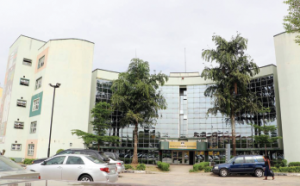
Glasshouse College, Lagos State University Teaching Hospital, where Femi O. Adelowo, FRCP, MACR, is professor of medicine and a consultant rheumatologist.
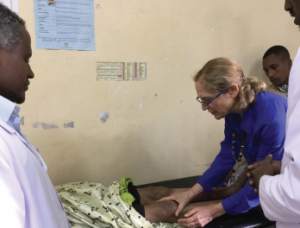
Michele Meltzer teaches physicians how to do joint examination in a rural hospital in Ethiopia.
“Also impeding progress is that many people have an erroneous belief that all diseases, arthritis included, are due to some sort of evil spells or ‘spiritual’ attacks. This often leads to denials by the affected individuals, visits to alternative healers and delays in seeking professional medical help.”
Adding fuel to the rheumatic fire, the population of Nigeria is expected to approximately double by 2050.4 When asked how his country should prepare for the inevitable rise in arthritis patients, Dr. Adelowo says, “We need to establish more centers to train residents for the postgraduate fellowship diplomas in rheumatology. Also, general practitioners will need instruction in the diagnosis and management of common rheumatological diseases such as back pain, osteoarthritis, rheumatoid arthritis, spondyloarthropathies and gout, as well as connective tissue diseases. This will be done as part of the mandatory recertification for all medical practitioners. Such trained doctors can handle basic management of these cases.
‘To help remedy the situation in Ethiopia, where there are no rheumatologists, Canadian and American physicians are currently working with local experts to advance training & education.’ —Dr. Mody
“We have seen internal medicine resident doctors become interested in rheumatology during review courses (preparing for the fellowship examinations). It was during this time that they developed insight into the scope and pattern of rheumatological disease.
“We must also facilitate the introduction of rheumatology into the curricula of all medical schools in the country. Presently, only about 10 medical schools do so out of the more than 30 medical schools. Fortunately, the body regulating tertiary education in Nigeria, the National University Commission (NUC), has approved compulsory rheumatology lectures in our medical schools. Efforts need to be doubled in the public health education programs, and specialist rheumatology clinics and hospitals need to be established in all the regional zones in the country. The good news for Nigeria is that more residents are training in rheumatology here than anywhere else in Africa. However, there is much work to be done.”
The View from Cameroon
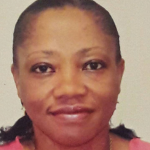
Marie Doualla Bija, MD
Marie Doualla Bija, MD, couldn’t agree more. Dr. Doualla, president-elect of the African League of Associations for Rheumatology, is one of 13 rheumatologists in Cameroon, a country of roughly 23 million people.4
Dr. Doualla, professor of rheumatology on the Faculty of Medicine and Biomedical Sciences at the University of Yaoundé in Cameroon, says, “We have created a formalized plan to train rheumatologists in Cameroon and have submitted it to the government. They want us to prove that we will be able to care for local rheumatic diseases, and that we understand the epidemiology of these conditions. To go forward, we will need a sponsor to accompany the creation of the residency program and to bring teachers into the project; now, there are only two available in the entire country.”
So what did Dr. Doualla and her colleagues present to the Cameroonian government?
“The training consists of three different groups. The first is a four-year fellowship for those who have completed training in general medicine (after a selective entrance exam). The first year of the fellowship concentrates on internal medicine fundamentals. The following three years, trainees rotate through different rheumatology units in Cameroon. (At present, there are only two qualified units [i.e., locations that have teachers, basic imaging and immunology labs]).
“The second group consists of internal medicine fellows who have completed their three-year training and who aspire to rheumatology as a subspecialty. Those selected are admitted for a two-year residency in rheumatology and emerge as an internal medicine rheumatologist.
“The third group is a two-year specialization for paramedics in the field of musculoskeletal diseases. Our goal is to have physical therapy training adapted to rheumatologic conditions. We have physical therapists for orthopedic surgery and others, but none yet for rheumatology. The two-year program will require that applicants have completed training as a nurse.”
Asked what gives her hope for the treatment of arthritis in Africa, Dr. Doualla notes, “We are seeing an increase in the awareness of rheumatic conditions and the lifelong problems they can cause. We still have a long way to go, however. Remarkably, in the recent noncommunicable disease action plan created by the government, rheumatic diseases were not listed! This is mostly because there are not enough people to advocate for rheumatology and the disabled. People think, ‘Oh, the women in the villages can manage even though they are in pain.’ The fact is that a stroke speaks louder than back pain.”
South African Advances
But in Africa, there are lifelong advocates, such as Girish M. Mody, MD, the Aaron Beare Family Professor of Rheumatology in the School of Clinical Medicine at the University of KwaZulu-Natal in Durban, South Africa.

Girish M. Mody, MD
Dr. Mody is a past president of the African League Against Rheumatism and an Ambassador for the Bone and Joint Decade. He says, “Over the past three decades, I have seen much progress, albeit at a slow rate. Not only have we made strides here in South Africa, but we have shining examples, like the UWEZO Project in Kenya, a collaboration between Kenyan, U.K. and Swedish rheumatologists. This team trained physicians and healthcare workers to conduct an educational program at 11 sites across Kenya. Via this train-the-trainer program, those individuals were able to provide basic skills to over 500 healthcare workers.”
Dr. Mody is author of a recent paper, titled “Rheumatology in Africa—challenges and opportunities,” that appeared in Arthritis Research & Therapy.5 He says, “Physicians from North America, the UK, Europe and Africa have received grants from the International League of Associations for Rheumatology and have helped develop rheumatology services in such countries as Zambia and Kenya. And to help remedy the situation in Ethiopia, where there are no rheumatologists, Canadian and American physicians are currently working with local experts to advance training and education.”
Despite progress, the fact remains, says Dr. Mody, that rheumatology services are scarce or nonexistent in many parts of Africa. “In most countries, patients do not have access to diagnostic tests, biological agents or arthroplasty. And with the wave of urbanization, we have seen a rise in such conditions as rheumatoid arthritis, gout and lupus. Add in the fact that there is often a delay in diagnosis due to poor education, sociocultural beliefs and poverty, [and] it is not uncommon for us to see patients who are presenting to clinics for the first time who are confined to a wheelchair or bed. If patients have joint damage, can’t close their fists or require an assistive device, then the opportunity to arrest the disease is largely lost.”
So let’s get to work, says Dr. Mody.
Dr. Mody has his own theory about the best way to advance the cause of rheumatology in Africa. “I believe in drivers—people who are committed to taking the ball and running with it. Once these individuals are trained, then we must support them over the following few years. You cannot train people and then leave them in isolation. They need support and guidance to develop services and train other health professionals.”
On the Ground in Ethiopia & Kenya
Michele Meltzer, MD, is associate professor of rheumatology at Thomas Jefferson University Hospital in Philadelphia. Lead author on a recent African Journal of Rheumatology article, titled “Bioethical challenges to rheumatology in resource poor areas: A review,” Dr. Meltzer digs into the details of decision making in rheumatological care in Africa.6 “In the U.S., we consider the patient to be the decision maker, but in Africa, it may be the community that is making the decisions. If a village has limited resources, then the powers that be may decide to treat the breadwinner as opposed to the child or elderly person.”
Patients don’t always advocate for themselves, says Dr. Meltzer. “If you have a patient who is illiterate and they have a complex disease, how do you explain it? Often, patients don’t pose any questions. We need to explore ways to help them feel comfortable discovering more information about their conditions.”
Dr. Meltzer, who has worked in Ethiopia, says, “The country has good medical schools, but they have no one to teach rheumatology. There is a rheumatology clinic in Addis Ababa staffed by residents and a nephrologist who has an interest in lupus. These people are just doing they best they can.
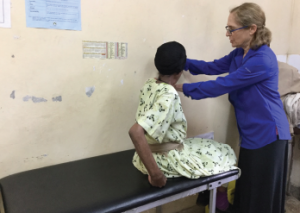
Michele Meltzer at a small hospital in Ethiopia in 2016, demonstrating to physicians how to examine the shoulder in a patient.
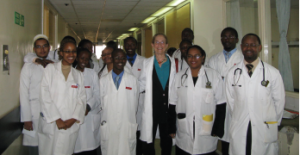
Michele Meltzer at Kenyatta Hospital in Nairobi in 2011 seeing patients in the hospital with medical residents.
“Even in rural clinics, the doctors are usually savvy enough to recognize rheumatic conditions, but they have no place to send these patients. And they are often too fearful of the toxicity of medications to prescribe them. Also, the Ethiopian government has a system [in which] there are only so many drugs that are allowed—and many drugs needed to treat rheumatic diseases are not on that list. We need advocates to approach the government and say, ‘We need these meds.’
“We did an audit of 50 arthritis patients in a rheumatology clinic; we found two problems. First, due to a lack of training, the doctors didn’t use adequate dosages of methotrexate. And even patients who were given adequate doses had lapses in dosing because the drug became unavailable. We need to document that treating our diseases not only improves morbidity and allows people to continue working, but also can prevent mortality. We need this data for the purpose of advocacy.”
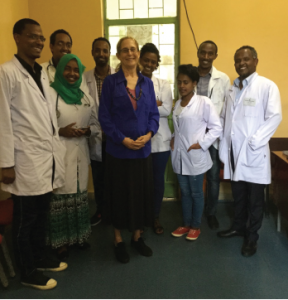
Michele Meltzer with residents and attending physicians in a small hospital in Ethiopia. She had just delivered a lecture on rheumatology basics.
How does all of this affect the physicians who are charged with caring for patients? Dr. Meltzer says, “If you are struggling with a huge patient load—and you’re not even a rheumatologist—what do you do? Take time and see three patients per hour or hurry through each meeting and see 20 patients per hour? These healthcare workers are very burdened, and there is no place for them to go to discuss these issues. The pay is low, so doctors often have a private practice on the side to support their families.”
As for the patients in Kenya, says Dr. Meltzer, she and her colleagues found that a lupus support group in Nairobi reduced the psychosocial stressors and improved patients’ understanding of their disease. “In Nairobi, these groups work very well. So many patients have no understanding of their disease—this is turning out to be a good mechanism to educate people.”
When it comes to medications, balancing cost and clinical effectiveness is always a huge challenge. “Biologics are not an option for the vast majority of African patients. Not only are they expensive, but they require refrigeration, which is not always a given. Using triple therapy for the treatment of rheumatoid arthritis (e.g., methotrexate, sulfasalazine and hydroxychloroquine) does treat rheumatoid arthritis well. And while it is a much less expensive option than a biologic, the ability to monitor for toxicity is a barrier.
“Some of my colleagues in Ethiopia are trying to introduce an arrangement [in which] hospitals could negotiate with labs that monitor for methotrexate toxicity and then have a package deal that includes lab tests so that monitoring is less expensive and uniform. But there is always the ethical question: ‘Do you start someone on a medication they need if you may not be able to monitor them adequately and/or continue the medication?’”
Dr. Meltzer is in the startup phase of her new initiative, called Rheumatology for All, a 501c whose goal is to educate rheumatologists in underserved areas—starting with Ethiopia and Kenya. “We are currently raising funds and have established that training will cost roughly $20,000 per person. As for locations, we are looking at McGill University, the University of Toronto or the University of KwaZulu-Natal in Durban, South Africa.”
“In any resource-poor area, noncommunicable diseases are given a lower priority. We have to shift the thinking of those who lead these countries. … We have to get them to see that, for example, an infection is short lasting, while a chronic or immune disease left untreated can lead to premature death and cause disability for a lifetime.”
The pain and suffering caused by arthritis in Africa seems incalculable. And yet, calculate it is what we must do.
Dr. Meltzer closes with these words of wisdom, echoed by her dedicated colleagues: “We need epidemiological studies on the impact of rheumatic diseases. That way we can approach the governmental decisionmakers with hard, indisputable facts that cannot be ignored.”
Elizabeth Hofheinz, MPH, MEd, is a freelance medical editor and writer based in the Greater New Orleans area.
References
- The American College of Rheumatology. 2015 workforce study of rheumatology specialists in the United States.
- Meltzer M. Oral communication. 2017 Apr.
- Mody G. Oral communication. 2017 Apr.
- United Nations, Department of Economic and Social Affairs, Population Division. World population prospects: The 2015 revision. Key findings and advance tables.
- Mody GM. Rheumatology in Africa—challenges and opportunities. Arthritis Res Ther. 2017 Mar 7;19(1):49.
- Meltzer M, Price A. Bioethical challenges to rheumatology in resource poor areas: A review. African Journal of Rheumatology. 2017;5(1).
In Brief
Four seasoned rheumatologists share their thoughts on the prospects for treating arthritis patients in Africa, where there are too many patients, not enough doctors & a pool of meager resources that has to be shared.
